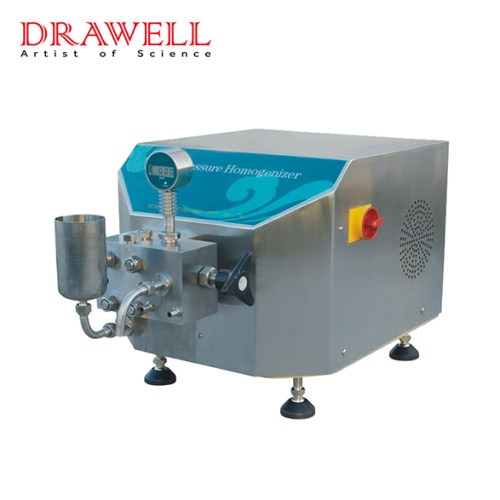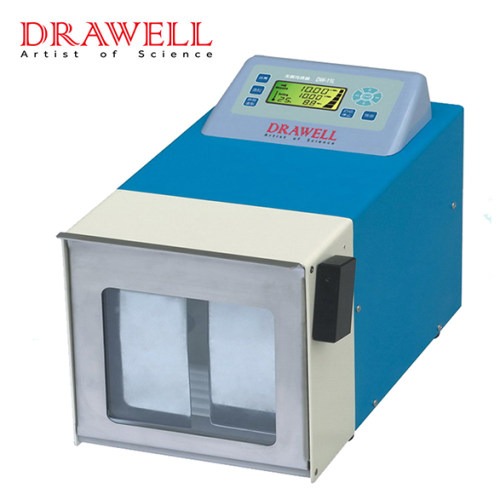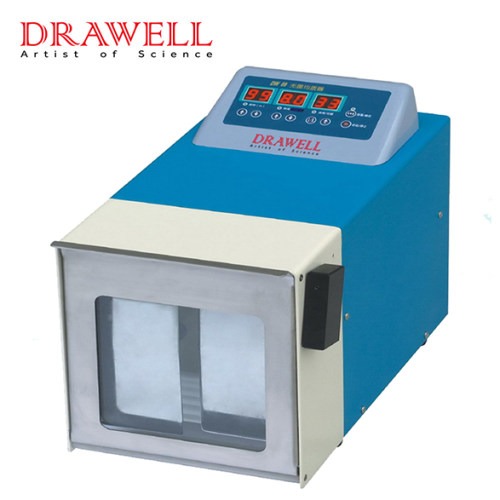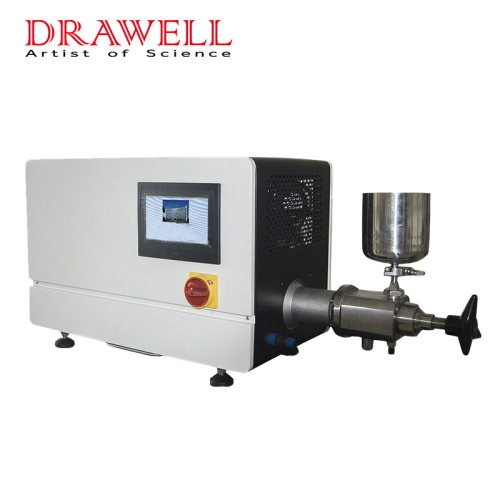If you need to know the main difference between the high pressure homogenizer and the microjet homogenizer, this article is very useful for you.
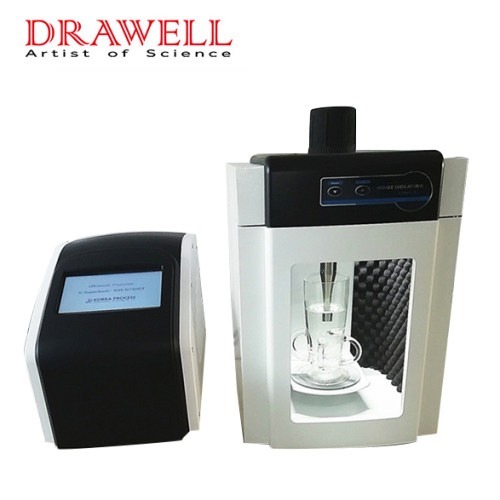
The Difference Between High Pressure Homogenizer and Microjet Homogenizer in Working Principle
In the high pressure homogenizer, the material is sucked and pressurized by the plunger pump and enters the pressure-adjustable valve group under the action of the plunger. After passing through the flow-limiting gap (working area) of a specific width, the material that loses pressure instantly is extremely. The high flow velocity (1000 to 1500 m/s) is ejected and collides with the collision ring of one of the valve components, resulting in three effects: cavitation effect, impact effect, and shear effect.
The microjet homogenizer is a high-pressure fluid that passes through the pore module in a pressurized state, and the pressure drops sharply to form an ultrasonic flow rate. At this time, particle impact, cavitation, flow reduction, shearing, and stress will occur in the fluid cells.
The high-pressure fluid quickly passes through the narrow gaps of the dispersion unit. At this time, the pressure in the fluid drops sharply to form a supersonic flow rate. The particles in the fluid collide, cavitate and leak, and the shear force acts to split the nanometer-sized fine molecules. The molecules exist in a completely homogeneous state.
The Difference Between High Pressure Homogenizer and Microjet Homogenizer in Core Components
The core component of high pressure homogenizer is a split slit homogenizer valve. When the high pressure homogenizer is in use, the homogeneous valve seat and the homogeneous valve core are installed and fitted through the impact ring. When the homogeneous plunger pump sucks and transports the sample to the homogeneous core, the sample is squeezed into the hole of the homogeneous valve seat from the front end.
The hole of the homogeneous valve seat is much smaller than that of the front-end pipe, so the sample accelerates rapidly, and squeezes out a gap between the homogeneous valve seat and the homogeneous valve core, and the sample is ejected from this gap at high speed, and is ejected out after being hit by the impact ring to complete homogenization. In this process, due to the high pressure at the moment of ejection from the slit, the joint action of the sample ejection, the impact force inside the impact ring, and the shear force between the particles, the effect of particle size is reduced.
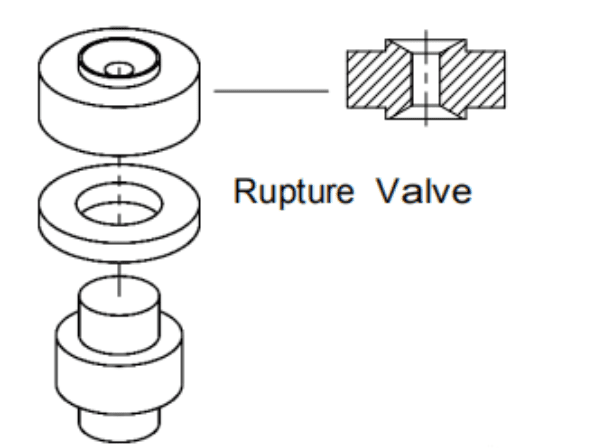
The core component of the microjet homogenizer is a diamond interactive cavity (micro-fluidic homogeneous cavity). The microjet diamond interactive cavity is an integral Y or Z-shaped microchannel with a fixed internal structure. The size of the channel is between 50um and several hundred microns, and it is made of diamond. When the microjet homogenizer working, the sample is pressurized by the power part, accelerated through the front channel of the diamond interactive cavity, and the jet velocity at the diamond microchannel can reach 500m/s. The opposite shot and huge pressure finally make the particle size of the material fine and uniform.
The Difference in the Effect of Processing Nanoemulsions and Liposomes
1. Particle size
Liposomes are bilayer particles with strong flexibility, and the energy required to make small particle sizes is not large. Nanoemulsions are mostly water-oil two-phase mixtures and do not require a lot of energy. For homogeneity, both the high pressure homogenizer and the microjet homogenizer can meet the requirements of reducing the particle size of liposome samples. But the microjet homogenizer can handle samples with smaller particle sizes than the high pressure homogenizer.
2. PDI
Liposome and nanoemulsion samples have very high requirements for particle size distribution, and the PDI needs to be 0.2 or less, which reflects the uniformity of the sample. In this case, the advantages of the microjet interactive chamber are obvious. The piston diameter of the micro-jet diamond interactive chamber is smaller, the channel stroke is long, the high pressure lasts for a long time, the pressure is stable, and the energy conversion rate is high when the sample passes through the channel. Similarly, the obtained PDI distribution is smaller and more uniform.


